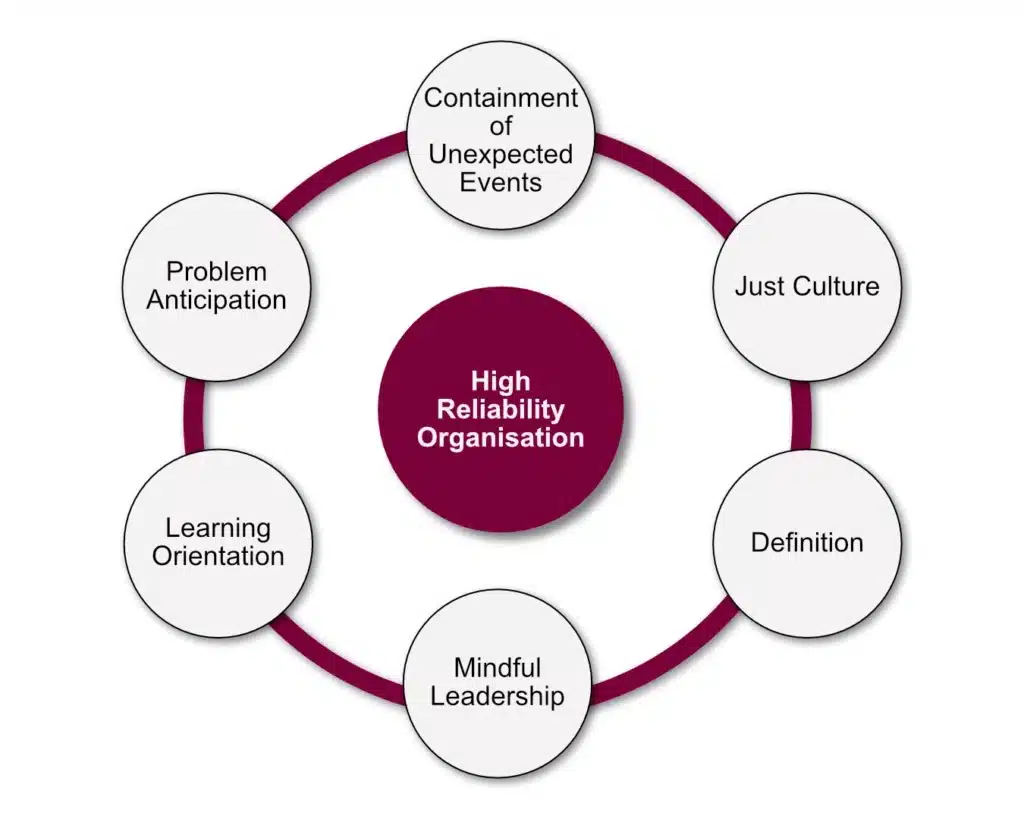When it comes to process safety management, one of the biggest challenges lies in the infrequency of major incidents. Potential events, although rare, demand meticulous attention due to their significant impact, but without them occurring regularly it is difficult to build a safety management system via a feedback loop.
Obviously, we don’t want major incident or events to occur, which is why it’s essential for organisations to recognise the gravity of process safety and invest necessary effort. You must remember that complacency in this field will have severe consequences.
As an organisation, you will have to establish comprehensive policies and procedures for your process safety management system. This guiding framework is not only a regulatory necessity but is also strategically important, as it ensures that your business is well-prepared to handle rare but impactful events.
So how do you implement an effective local, national, and international process safety management strategy?
In this article, we will discuss some guiding principles to help you think about the ways in which you can construct your own process safety management system.
Where to start?
Not all businesses and processes are identical. Regardless of your business or operational offering, a successful process safety management system is rooted within the legislation and a thorough understanding of what it is you do.
Legislation
Adherence to legislation plays a vital role in shaping robust management frameworks. Notably, Europe follows the SEVESO Directives, the United States adheres to the OSHA PSM Standards, and the UK operates under COMAH legislation (which aligns with the SEVESO Directives). These legislative guidelines address the multiple process safety hazards associated with processing operations.
The relationship between PSM and on-site hazardous materials
Within the above regulations, there is a direct correlation between the volume of hazardous materials on-site and the severity of the potential consequences.
It’s imperative to recognise that the nature and scale of hazards vary significantly from business to business and from process to process. A fire involving a small quantity of a highly flammable liquid, for example, will differ greatly from one involving a substantial volume, such as 50,000 tons of the same flammable liquid.
Process safety management therefore focuses on distinguishing between potential incidents. Emphasises must be placed on distinguishing potential events and implementing tailored safety measures.
By aligning legislative frameworks with the specifics of potential hazards at your facility, you can begin to generate a comprehensive process safety management system that prioritises regulatory compliance alongside effective risk analysis, identification, and mitigation.
Engineering, Management, and Human Commitment in Process Safety Management
Once legislative frameworks and risk identification have been thoroughly integrated, you must then strike a balance between engineering and management.
PSM isn’t confined to technical expertise and operating procedures alone; it involves the active participation and competence of individuals from across the business. There are two key points that should emerge as the foundation for your process safety management system:
- Effective Business Management and Engineering Involvement
- Commitment from the Leadership to ‘Doing the Right Thing’
Effective Business Management and Engineering Involvement
Process safety management is often misconceived as solely an engineering matter and is often relegated to the technical experts.
While process safety encompasses technical complexities and robust methodologies, the human element cannot be overlooked.
“No matter what business you’re in, the human element is omnipresent. You need to understand that just like your family members, employees, and clients, you’re only human. Leading with empathy is the best way to attain success in business. And by cultivating a culture that prioritizes the human element, you can get back to what really matters — people.” – Zach Ferres, The Human Element: Your Most Important Business Resource
By combining the human element and strengthening the relationship between engineering and management, technical process safety aspects can be addressed while also aligning with the broader objectives of effective business management.
Leadership Commitment to ‘Doing the Right Thing’
The success of a holistic process safety management system hinges on the commitment of the company leadership to ‘do the right thing.’
This commitment will set the tone for the entire organisation and will involve the establishment of a proactive stance towards managing process safety appropriately.
Leadership, therefore, must spearhead a commitment towards prioritising ‘doing the right thing’ in regard to holistic process safety procedures and policies. This commitment not only safeguards human well-being but also shields the business reputation from the potential fallout of major accident hazards.
Creating a holistic approach via business alignment
Many businesses have ambiguous goals, objectives and missions that result in a convoluted vision. Through use of a clear and strategic business alignment model, leaders can create and manage a vision that optimises structure, resources, and productivity to propel the business forward. Your process safety management system must therefore integrate into your business alignment model.
Leadership’s Role
Leadership must set the tone for an effective process safety management system. By articulating a clear roadmap and vision for the business (including process safety), leaders must guide the organisation towards value maximisation rather than short-term profit maximisation.
This strategic vision requires both goal setting and the allocation of appropriate resources to achieve it.
Distinguishing between Leadership and Management
Leadership and management play distinct roles. While leaders focus on strategic vision and culture, management deals with the tactical aspects on an annual, monthly, and daily basis.
It’s vital to differentiate these roles to ensure a cohesive and effective approach to process safety.
Cultivating a Sound Process Safety Culture
The essence of a sound process safety culture lies in the attitudes and behaviours from every member of staff. Preventing, controlling, and mitigating potential hazards necessitates a commitment to ‘doing the right thing’, and must influence both individual and organisational behaviours.
Commitment to Continuous Improvement
A robust and holistic process safety culture thrives on a commitment to continuous improvement. This model encourages open discussions, identifies gaps, and focuses on areas that need enhancement. By fostering a culture where process safety is a regular topic of conversation, organisations can create a proactive stance towards identifying and rectifying potential processing issues.
Instigating Behavioural Change
Behaviours, not knowledge and skills, are what truly defines how an employee approaches their role and how a business approaches culture. To create a holistic process safety management strategy, behavioural change must be woven into the fabric of your business.
Drawing Insights from Occupational Safety
When examining the trajectory of occupational health and safety over the last 50 years, it offers valuable lessons for the development of your process safety management system. Previously, major accidents in occupational safety often resulted from simpler incidents (when compared to process safety), such as slipping, tripping, or falling.
The substantial reduction in fatalities within occupational safety is a testament to the considerable efforts invested by leadership to alter behaviours and attitudes. The transformation was tangible, as fatal accident rates experienced in occupational health and safety have seen a considerable decline over time.
Key Factors for Behavioural Change
This transition in occupational safety can aid us in understanding what can be applied to instigate behavioural change within the broader spectrum of process safety. Four key elements can aid in the creation of a holistic process safety culture that excels:
Tangible Targets and Objectives
Establishing clear and measurable process safety performance indicators from the top down sets the tone for the organisation. This clarity ensures that everyone understands what the business aims to achieve, while aligning clear actions with overarching achievable goals.
Appropriate Systems and Procedures
The existence of comprehensive systems and procedures creates guidelines and provides a framework to execute tasks properly. These systems and procedures foster consistency and adherence to process safety protocols.
Constant Coaching and Mentoring
Perhaps the most essential, yet often overlooked aspect, is the obligation towards continuous coaching and mentoring.
Committing towards identifying strengths, addressing weaknesses, finding gaps, and facilitating discussions will contribute significantly towards creating a proactive safety culture.
This continuous improvement mindset is the catalyst for sustained individual and business change.
Breaking the Auditor Mentality
A compelling analogy arises when considering organisational responses to impending audits. In many instances, work cultures shift to concealment which highlights a reluctance to embrace the proactive approach towards identifying gaps for improvement. To foster a genuine commitment to ‘doing the right thing’, organisations must shift from a reactive stance to a model of continuous improvement.
High Reliability Organisations
When trying to create anything, there must always be an end goal in mind. For process safety management, this should be your business fitting the High Reliability Organisation (HRO) mould.
High Reliability Organisations are businesses or organisations that fulfil a range of pillars that transcend the conventional role of leadership, and in turn, fosters a philosophy that prioritises proactive risk management.

Mindful Leadership
The foundations of High Reliability Organisations are rooted in essential principles and key elements that form a solid basis of understanding and application of safety in that business. These essential principals include:
At the core of a HRO is the concept of mindful leadership. This goes beyond the notion of merely delegating safety concerns to technical experts.
Instead, it involves leaders who acknowledge the potential for significant harm within the business and keep this awareness at the forefront of their decision-making. The belief that major events are unlikely is not a deterrent; rather, they prompt a continuous commitment to prevent harm.
Proactive Risk Management
HROs are proactive in their approach to risk management. Understanding a potential processing hazards is a core foundational block and HROs create a learning culture that constantly evolves and improves. By anticipating potential problems and putting preventive measures in place, HROs aim to control and mitigate risks before they escalate.
Reactive to Proactive Flexibility
The shift from a reactive stance of fixing things after they’ve gone wrong to a proactive one is pivotal. HROs actively address issues before they manifest into problems. The goal is to reduce unexpected events through a culture of continuous improvement. While unknown unknowns may persist, cultivating a just culture ensures accountability to ‘doing the right thing’ across all levels of an organisation.
Constant Improvement
A HRO is commitment to constant improvement. By managing hazard identification methodologies appropriately and consistently seeking ways to enhance safety measures, these organisations become adept at navigating potential risks. These HROs are constantly building, learning, and iterating from hazard analysis methodologies such as HAZOP, What-If Analysis, QRA, LOPA, HAZID and DSEAR. Furthermore, these hazard analysis methodologies are treated as evergreen documents and never sit on the shelf for too long.
PSM: Start Your Strategic Journey Today
Process safety management is not merely a regulatory checkbox; but is a strategic imperative for your business. By embracing a holistic approach that combines legislative adherence, engineering prowess, and a robust safety culture coupled with a thorough risk based process safety methodology, you can turn your business into a High Reliability Organisation and create a resilient, effective, and globally applicable process safety management system.
In an industry where the infrequent can have serious consequences, creating a holistic process safety management strategy must be the cornerstone for your sustained business success and ongoing process safety commitment.



